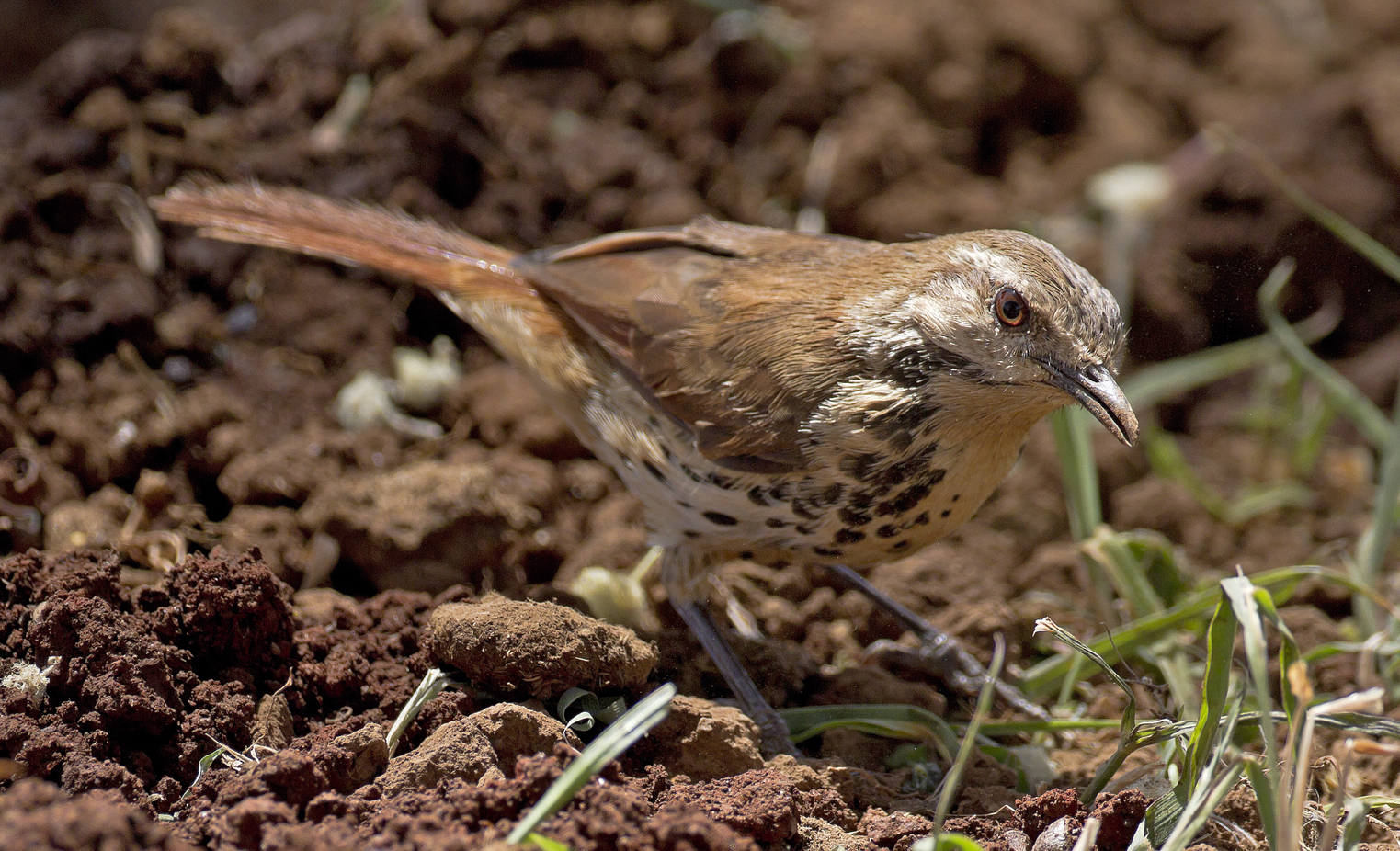
Cichladusa guttata
TAXONOMY
Cichladusa guttata Heuglin, 1862, White Nile.
OTHER COMMON NAMES
English: Collared palm-thrush, morning warbler; French: Cichladuse
а collier; German: Morgenrцtel; Spanish.
PHYSICAL CHARACTERISTICS
6.7 in (17 cm); male 0.6–1.1 oz (17–30 g); female 0.6–1.1 oz
(16–30 g). Rufous upperparts and tail. Buff brow and underparts
with black spotting on breast, fading to mottled rufous
on flanks and belly.
DISTRIBUTION
East Africa, from southern Sudan and Ethiopia to northern
Tanzania.
HABITAT
Thick scrub and dense riverside thickets, bushes in dry savanna,
mostly at low altitude.
BEHAVIOR
In pairs or family groups, shy, keeping well hidden, but sometimes
more visible in gardens and hotel grounds; mostly terrestrial,
flicks wings and slowly waves tail as it hops about.
FEEDING ECOLOGY AND DIET
Insects, snails, and other small invertebrates.
REPRODUCTIVE BIOLOGY
Monogamous, territorial; nest of mud, bound with a few
strands of grass and lined with roots, on tree branch; two to
three eggs incubated mostly by female for 12 days; both adults
feed young.
CONSERVATION STATUS
Not threatened.
SIGNIFICANCE TO HUMANS
None known.
Other popular Animals
Photo Gallery of - Spotted palm-thrush




 Animalia Life
Animalia Life